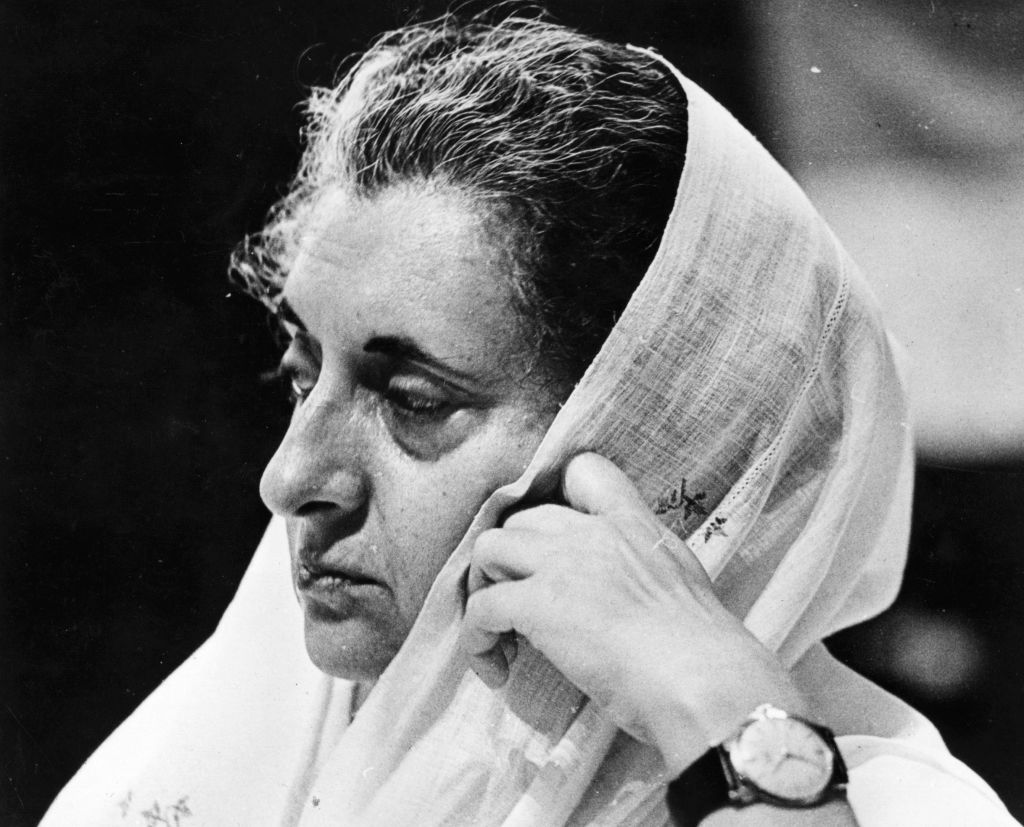The Emergency in India (1975–1977)

- 28 Jun 2025
In News:
The declaration of Emergency in India from 25 June 1975 to 21 March 1977 marks one of the most debated and transformative chapters in the country’s post-independence history. Proclaimed under Article 352 of the Constitution citing “internal disturbance”, this period had far-reaching legal, political, and social consequences. It served as a stress test for India’s democratic institutions and led to significant constitutional reforms.
Background:
- The early 1970s were marked by growing political discontent. Nationwide protests, especially in Bihar and Gujarat, were spearheaded by Jayaprakash Narayan against issues such as rising unemployment, inflation, corruption, and misuse of political power.
- The immediate provocation came from the Allahabad High Court’s judgment on 12 June 1975, which found Prime Minister Indira Gandhi guilty of electoral malpractice in her 1971 Lok Sabha campaign. The Court disqualified her from contesting elections for six years under the Representation of the People Act, 1951.
- Though the Supreme Court granted a conditional stay, political pressure intensified, with mass movements demanding her resignation.
Proclamation of Emergency
On 25 June 1975, President Fakhruddin Ali Ahmed, on the advice of the Prime Minister, declared a national Emergency under Article 352, citing internal disturbance. This was the third Emergency in India — the first two being during external wars (1962 with China and 1971 with Pakistan). However, this was the first peacetime Emergency.
Constitutional Basis
At that time, Article 352 allowed Emergency on three grounds:
- War
- External Aggression
- Internal Disturbance (later amended to “armed rebellion” by the 44th Amendment, 1978)
Suspension of Fundamental Rights
Two days later, on 27 June 1975, the government invoked:
- Article 358: Automatically suspended the freedoms under Article 19 (freedom of speech, assembly, movement, etc.)
- Article 359: Allowed suspension of Articles 14, 21, and 22, stripping protections related to equality before law, life and personal liberty, and protection against preventive detention.
Citizens lost access to courts for constitutional remedies. Prominent opposition leaders, including Jayaprakash Narayan, Morarji Desai, Atal Bihari Vajpayee, and L.K. Advani, were arrested under the Maintenance of Internal Security Act (MISA). According to the Shah Commission, around 35,000 individuals were detained without trial.
Censorship and Media Suppression
From 26 June 1975, press censorship was imposed. Newspapers were mandated to get clearance from government-appointed censors before publication. International news coverage was also tightly controlled, with telex messages of foreign correspondents placed under surveillance.
Key developments:
- On 20 July 1975, the Board of Film Censors was restructured to impose stricter control over cinema.
- On 1 February 1976, the four national news agencies — PTI, UNI, Samachar Bharati, and Hindustan Samachar — were merged into ‘Samachar’.
- The Press Council of India was dissolved.
Constitutional Amendments and Legislative Overreach
Several constitutional amendments were enacted to consolidate power:
- 38th Amendment (1975): Made the President’s Emergency declaration non-justiciable.
- 39th Amendment (1975): Excluded Prime Minister’s election from judicial review.
- 42nd Amendment (1976) (termed “Mini-Constitution”):
- Gave primacy to Directive Principles over Fundamental Rights
- Extended Lok Sabha and State Assembly terms from 5 to 6 years
- Limited judicial review, centralised authority
- Empowered Parliament to amend the Constitution without court scrutiny
Sterilisation Campaign
One of the most controversial aspects was the forced sterilisationprogramme led by Sanjay Gandhi. While aimed at population control, it resulted in widespread coercion and human rights violations.
- 1975–76: 26.42 lakh sterilisation procedures
- 1976–77: 81.32 lakh
- Total over two years: 1.07 crore
- Many were linked to access to ration cards, housing, loans, and employment
End of Emergency and Democratic Reversal
The Emergency was revoked on 21 March 1977. In the subsequent general elections (March 1977), the Congress party was defeated, and the Janata Party under Morarji Desai assumed power. This marked the first non-Congress government at the Centre
Post-Emergency Reforms: The Shah Commission and 44th Amendment
The Shah Commission (1977–79)
Set up in May 1977, chaired by Justice J.C. Shah, it investigated:
- Illegal arrests and detentions
- Press censorship
- Forced sterilisation
- Bureaucratic misuse and political excesses
44th Constitutional Amendment (1978)
To prevent future misuse:
- Replaced “internal disturbance” with “armed rebellion” as a ground for Emergency
- Restored judicial review of Emergency proclamations
- Safeguarded Fundamental Rights, particularly Articles 20 and 21
- Ensured Cabinet approval was mandatory before Emergency declaration
